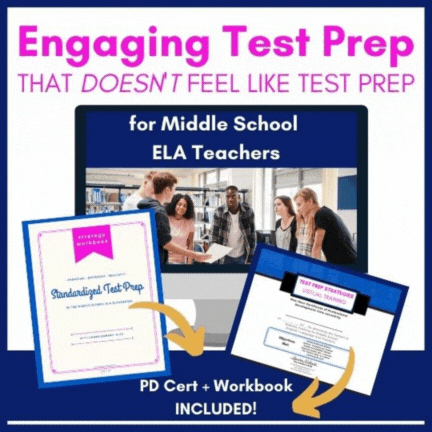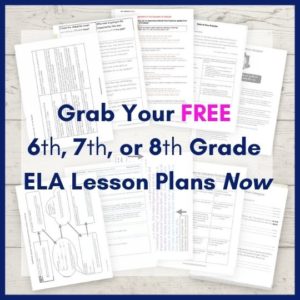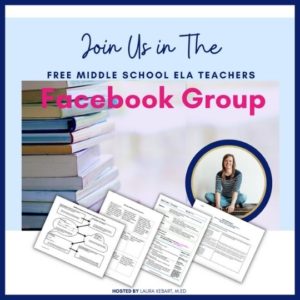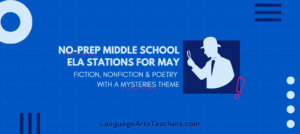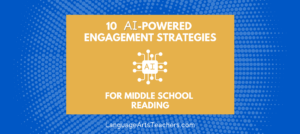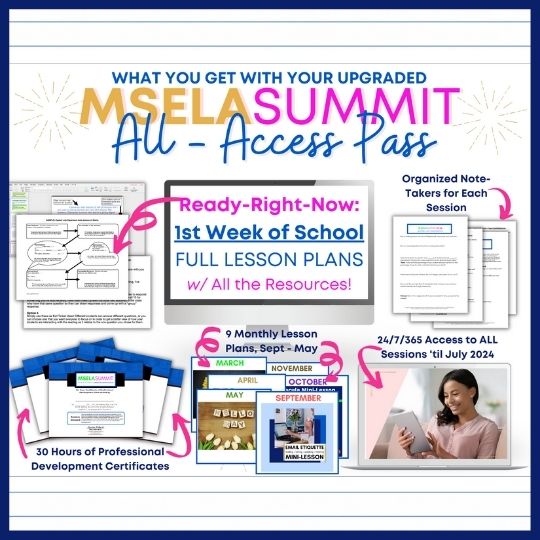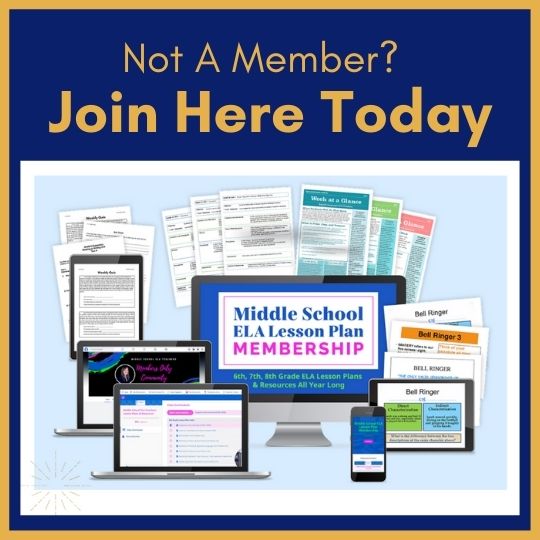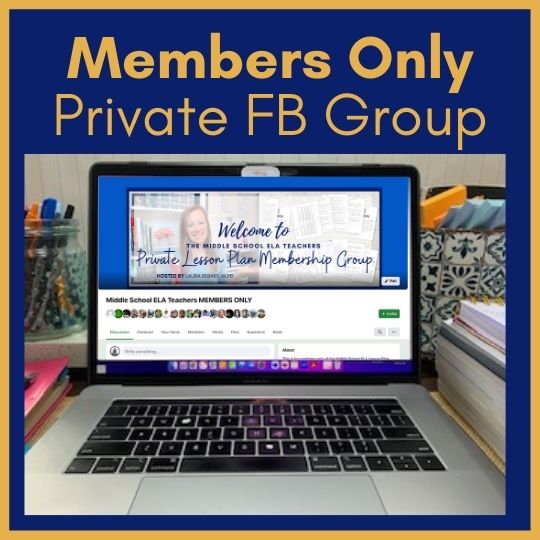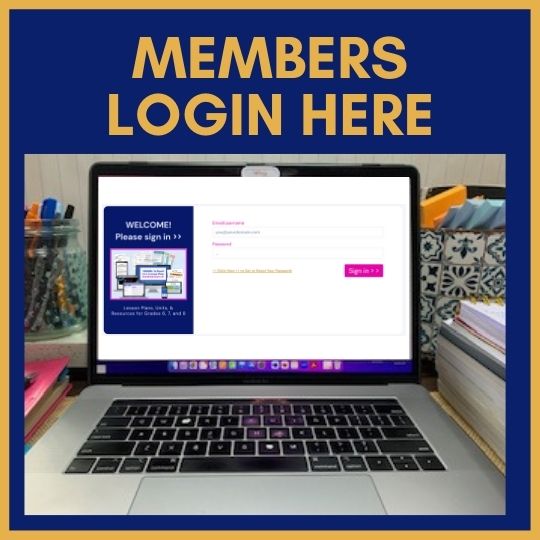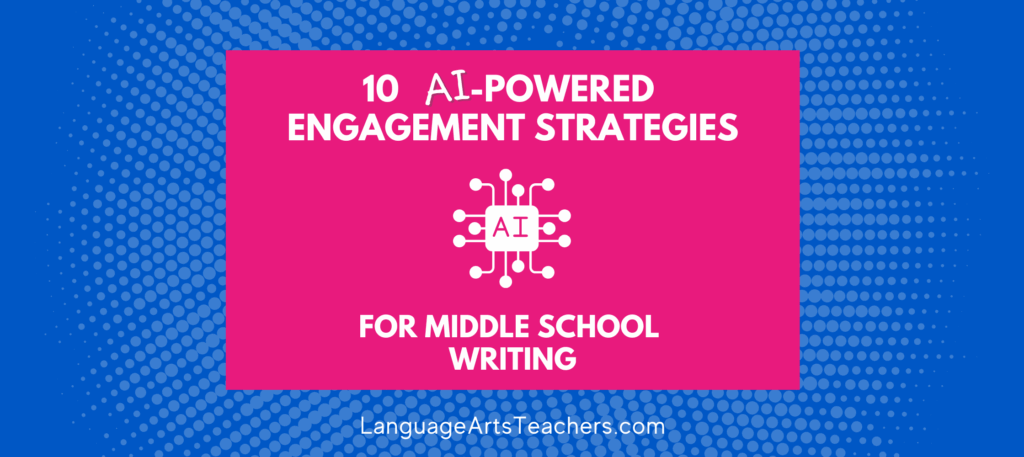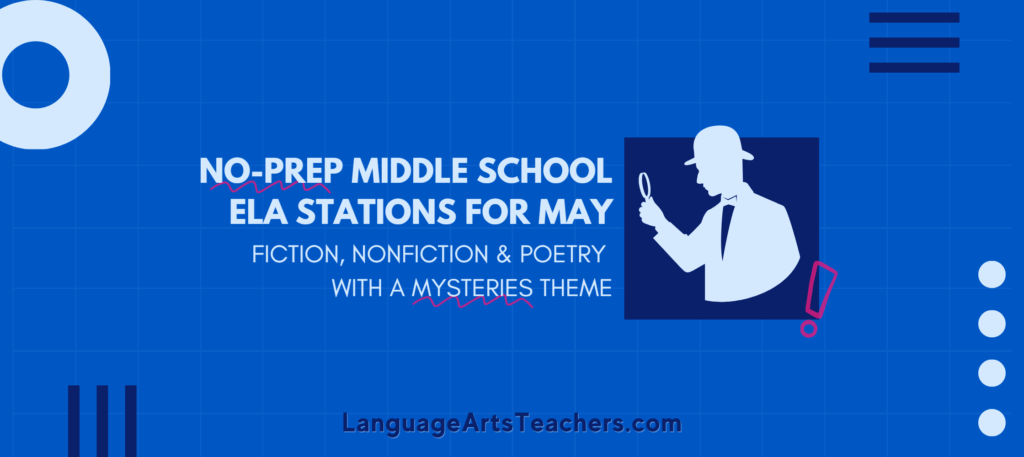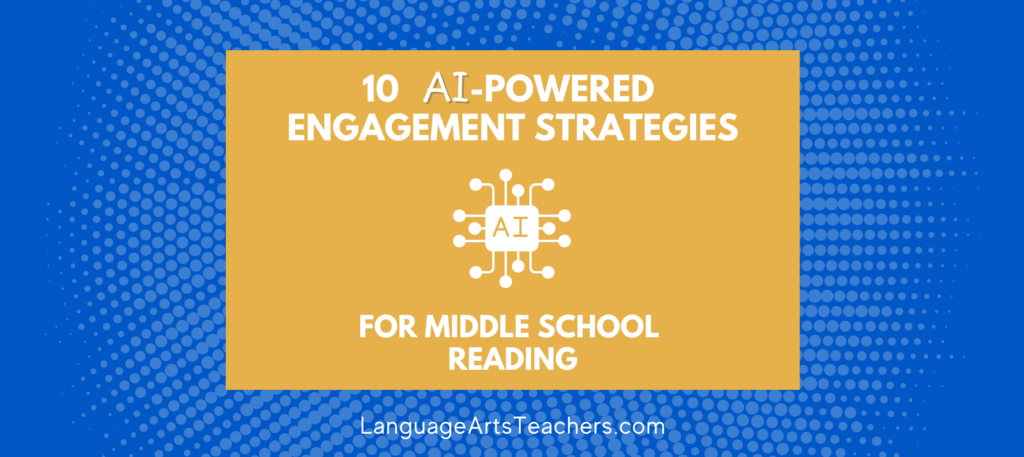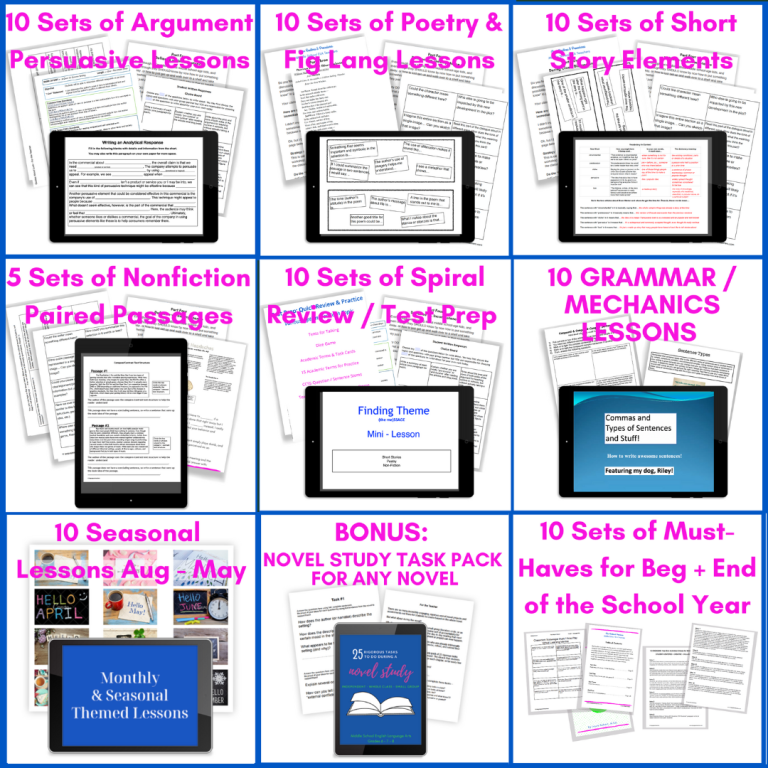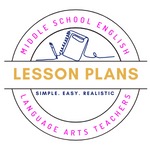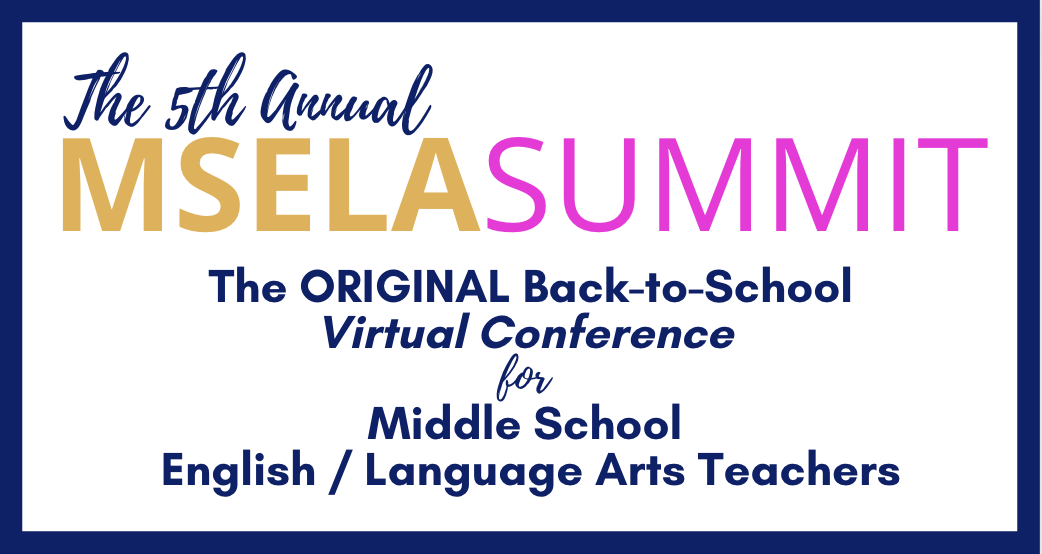Confused about how to use mentor sentences in middle school ELA/R writing class?
If you’re stuck on:
– What mentor sentences are (and where to get them)
– Why everyone is using them
– What to do with them
– How they help your students’ writing
. . . Then you’re in JUST the right place!
What are mentor sentences?
Mentor sentences, also called “author quotes,” are sentences that come from a novel, short story, poem, etc. that are used to spark originality and creativity in students. They act as a bridge between the student’s own writing and the work of an author (usually a YA book), allowing the student to practice using that writer’s style in their own writing. Mentor sentences are the exact opposite of poorly-written sentences that we probably grew up with. You know the ones I’m talking about, where we had to correct all the mistakes? Mentor sentences are very well-written and represent excellent usage in terms of sentence structure, creativity, figurative language, descriptions, punctuation, style, and more. They can be long or short sentences and they typically come from young adult novels or short stories found in classroom libraries. In other words, if you have books in your classroom, then you have thousands and thousands of mentor sentences already!
Examples of mentor sentences
– “A bolt dropped and clanged against the boat’s bottom. The heavy motor tipped over the edge with a solid thud.” (Lions and Liars by Kate Beasley)
>> Use to teach the use of onomatopoeia in writing. Students can then write their own sentences using onomatopoeia, or teach the concept with the mentor sentence and then have students revise something they’ve already written.
-“You could rattle the stars. You could do anything, if you only dared. And deep down, you know it too, and that’s what scares you the most.” (Throne of Glass by Sarah J. Maas)
>> Use to teach sentence variety like the impact of short sentences. Use to teach ‘breaking the rules’ so students can see the strategic, carefully-placed and creative way to begin a sentence with ‘and’. Use to teach hyperbole.
-“Just because we’ve been … dealt a certain hand … it doesn’t mean that we can’t choose to rise above — to conquer the boundaries of a destiny that none of us wanted.” (Twilight by Stephanie Meyer)
>> Use to teach creative uses of ellipses and hyphens and how those punctuation tools impact the speaker’s message as well as the reader.
– “I am going to say something that may sound crazy, but it is true. We can’t solve a problem by using the same kind of thinking that created it.” (Albert Einstein)
>> Use quotes from speeches or from other content areas to teach various sentence structures, point of view, comma usage, etc.

Benefits of using mentor sentences in the classroom
– Students develop a deeper connection to their writing.
– Students feel more confident in their writing skills.
– Students are actually engaged in reading and writing.
– Students have opportunities to learn about other authors and genres of writing.
– Students have a chance to model their own words in their writing.
– Students practice the art of turning ideas into writing.
– Students can discover their own voices and the voices of others.
– Students can discover their own strengths and weaknesses.
– Students learn to take risks and stretch beyond their comfort zones (This is my FAVORITE reason to use mentor sentences regularly in the classroom).
– Students learn to be creative through writing.
– Students learn that they are capable writers.
Activities for practicing mentor sentences
– Rewrite one of your students’ mentor sentences from a book they chose, but using your own words.
– Select an author you’ve been reading in class already. Find a sentence that is creative, or that represents a concept you need to teach (like commas in a series) and use it as a way to introduce, review, or practice that skill.
– Create a choice board that incorporates various types of mentor sentences, authors, and literary devices. Let students choose which sentences they want to work with. Or turn the choice board into a station or a writing center activity.
Identifying literary devices with mentor sentences
When a student selects a mentor sentence, the student is reminded of the importance of connecting words to feelings, ideas, and images. In order to write an original piece, students must make the connection between what the author said and what the student feels and sees and understands. Literary devices like similes, metaphors, and other types of figurative language help students do just that. You can also include devices like ellipses, hyphens, semicolons, and other punctuation because writers use them strategically and with intention in order to create impact for the reader (author’s purpose).
Strategies for teaching mentor sentences
When using mentor sentences in your class, there are a few simple things you can do to make the most of the opportunity. Keep the focus on the author’s purpose and why certain words or certain types of punctuation were used in the mentor sentence. Students can write their own very similar type of sentence when they understand what an author is doing and why.
Be consistent: Mentor sentences should be used as often as possible during class. They don’t need to be saved for a special occasion, but they do need to be a part of the regular routine. I love using mentor sentences as bell work at the beginning of class, or as part of my consistent writing stations. If you teach reading and not writing (some schools are set up so that students have separate teachers for this) then you can still bring the benefits of mentor sentences into your reading classroom! When students understand what a writer is doing and how they create meaning through their words, sentence style, and punctuation choices, comprehension goes up!
Resources for finding mentor sentences
· Your very own classroom library >> Pick up a book, find an interesting or creative sentence that you want to share with your students as a model
· Teach your students to choose sentences from what they’re already reading independently to use as mentor sentences (they LOVE doing this!)
· As you read with your students, keep track of sentences you want to come back to as mentor sentences later on (Ooh, this author uses subordinate clauses really well here. . . I’ll use that sentence on Friday when I go over subordinate clauses).
Summary of the benefits of utilizing mentor sentences in the classroom
When using mentor sentences, you are helping your students develop and model their own writing from established authors. Instead of showing students sentences loaded with mistakes that they have to correct, you’re bringing really great writing to your students and asking them to write in that same style. This helps your students develop their writing confidence while also strengthening their critical thinking skills while they find their own voices as writers. Mentor sentences can help your students see the benefits of being a part of your classroom reading and writing community and develop a sense of ownership of the learning process.
⭐️If you are currently looking for an online English teacher position, give Jooble a try!⭐️



